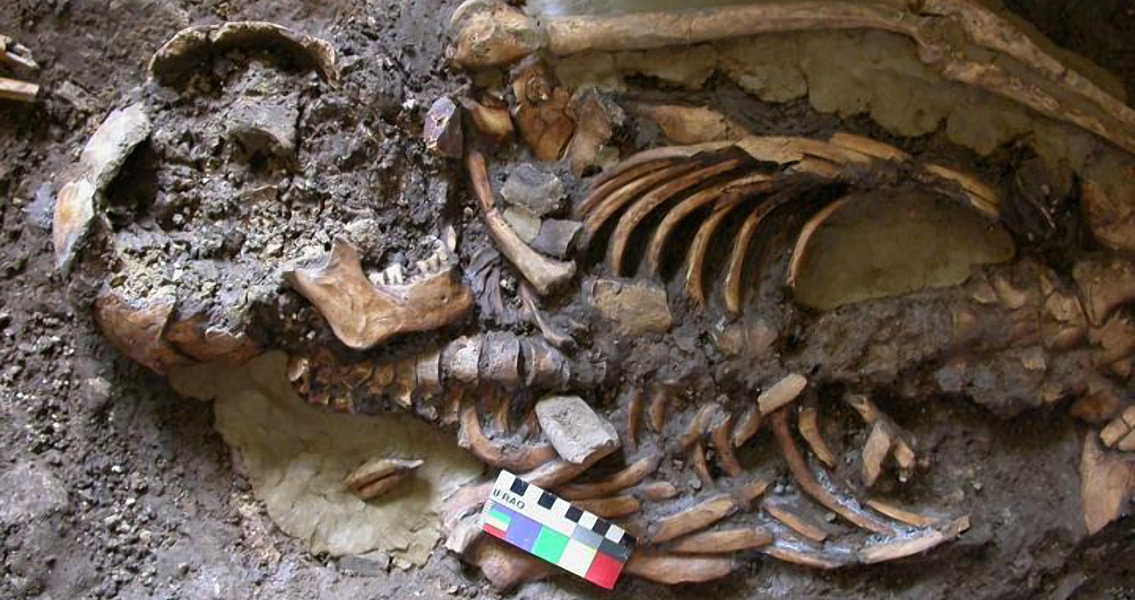<![CDATA[An international team of scientists has unearthed a previously unknown 'fourth strand' of ancient European ancestry. The discovery was made following the first sequencing of human remains from the Late Upper Paleolithic period. Scientists read the DNA from two burials in West Georgia, one around 10,000 years old, the other over 13,000. With both sets of remains being found in caves, they were sufficiently well preserved to allow their DNA to be studied. The findings have the potential to answer questions about the origins of the Yamnaya culture, herders from the Steppe who swept into Western Europe around 5,000 years ago. Some archaeologists argue that the arrival of the Yamnaya heralded the start of the Bronze Age in Europe through the skills in metallurgy and animal herding they brought with them. Just as significantly they brought the Caucasus strand of hunter-gatherer DNA, a strand now present in virtually all populations from Europe. Conducted by a team of researchers from Cambridge University, Trinity College Dublin and University College Dublin, the study is published in the journal Nature Communications. According to the paper, the new lineage originated shortly after the expansion out of Africa 45,000 years ago. Populations of hunter-gatherers split from the western hunter gatherers and went onto settle in the Caucasus region, close to the present day Georgian and Russian border. For millenia the hunter-gatherers remained in the Caucasus, becoming increasingly isolated during the Ice Age, 25,000 years ago. The relative shelter of the Caucasus allowed them to weather the falling temperatures, and the thaw at the end of the Last Glacial Maximum brought them into contact with other hunter-gatherer tribes, most likely from further east. This, the scientists involved in the study argue, led to the genetic mixture that resulted in the Yamnaya culture, answering a crucial mystery about the ancient origins of modern European ancestry. "We can now answer that as we've found that their (the Yamnaya) genetic make-up is a mix of Eastern European hunter-gatherers and a population from this pocket of Caucasus hunter-gatherers who weathered much of the last Ice Age in apparent isolation. This Caucasus pocket is the fourth major strand of ancient European ancestry, one that we were unaware of until now." said Dr. Andrea Manica from Cambridge University's Zoology Department and one of the study's lead authors. Earlier Genome studies revealed three ancestral populations that had played a role in forming modern Europeans. One group of hunter-gatherers, who following the 'out of Africa expansion', migrated north-west and colonised much of Europe from Spain to Hungary, and another which settled in the Eastern Mediterranean and Levant and started to develop agriculture around 10,000 years ago. The final strand, it was thought, came with the arrival of the Yamnaya 5,000 years ago. After sequencing the DNA recovered from the two burials, the scientists discovered that the Yamnaya owed over half their ancestry to a genetically distinct group - the fourth strand. By reading the DNA they've shown that the divergence from western hunter-gatherers occurred shortly after the expansion out of Africa. The Caucasus hunter-gatherer's genome showed evidence of mixing with the early farmers of the Levant area until 25,000 years ago, likely as a result of the close proximity of the two regions. The mixing ended just before the onset of the Last Glacial Maximum. The Caucasus genes became increasingly homogenised, a sign of breeding between those with similar DNA, likely caused by the population's isolation. This isolation continued for as long as 15,000 years, until the Ice Age started to recede and migrations started again. "We knew that the Yamnaya had this big genetic component that we couldn't place, and we can now see it was this ancient lineage hiding in the Caucasus during the last Ice Age," said Manica. Alongside its impact on Europe, the study's authors also think the Caucasus population must have migrated to South Asia at some point. "India is a complete mix of Asian and European genetic components. The Caucasus hunter-gatherer ancestry is the best match we've found for the European genetic component found right across modern Indian populations," said Eppie Jones, a PHD student from Trinity College Dublin who was the first author of the paper. The continued sequencing of genomes from the region undoubtedly has the potential to dramatically change our understanding of this key period of human evolution and development in Eurasia, hopefully bridging the gaps that remain in our knowledge of this crucial period of history. Image courtesy of Eppie Jones For more information: www.nature.com/ncomms ]]>
New Strand of European Ancestry Discovered
